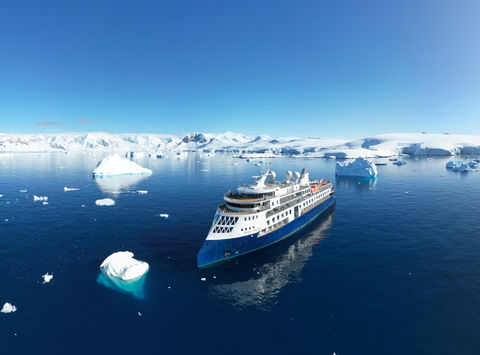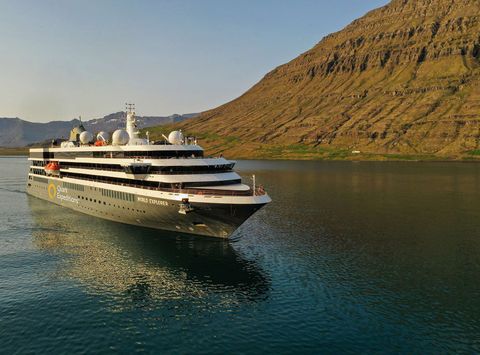This unique option allows passengers to fly direct between Punta Arenas in southern Chile and King George Island, the largest in the South Shetlands archipelago, before boarding a ship for an expedition cruise around the Peninsula. This is a great choice for those with limited time or who doubt their sea-legs.
Crossing the Drake Passage is one of the most talked-about subjects for anyone contemplating a journey to the Antarctic Peninsula. Its reputation inspires excitement in some but in others brings nervous anticipation. In many ways the crossing is part of the adventure and heightens the sense of remoteness surrounding your destination, however, it is not the only way to reach the peninsula.
The flight from Chile to the South Shetland Islands only takes a little over 90 minutes, aboard a ‘turbo fan jet BAE 146’, particularly suited for this kind of trip. You can choose to fly both ways, ideal if you are short on time or are particularly concerned about the Drake Passage – or ask us about alternative options to fly one way and cruise the other, taking the opportunity to experience both options for a really unique Antarctic experience.
Itinerary
All voyage itineraries are intended as a guideline only – embracing the unexpected is part of the legacy of expedition travel. Actual routes and landings will be dependent on weather, sea and ice conditions. A degree of flexibility is essential in the polar regions!
The below sample itinerary is based on the 8-day voyage on the Ocean Explorer. Other departures may vary in duration and routing, i.e. alternative embarkation or disembarkation ports, or do not include the pre-voyage hotel night. Please contact us for specific details.
Arrive in Punta Arenas and transfer to your hotel. Tonight you will enjoy a welcome dinner with your fellow passengers.
Transfer to the airport and take your seat for the flight south. King George Island is part of the South Shetlands archipelago, which lie about 160km off the coast of Antarctica. Following an exploration of the area, head down to the beach on Fildes Bay where you will be transferred by Zodiac to your ship.
The next few days will be spent exploring this incredible region – your itinerary will be dependent on weather and ice conditions, but highlights may include the huge flooded caldera of Deception Island, the wildlife of Livingston Island, Port Lockroy or Cuverville Island. Look out for whales, penguins and seals and enjoy spectacular scenery and breathtaking icebergs from the ship or Zodiacs.
Returning north disembark at King George Island and board the flight back to Punta Arenas. Enjoy an overnight stay in the city.
Enjoy breakfast with your fellow expeditioners in the hotel before saying your farewells.
Current offers
Prices
What's Included
-
Flights between Punta Arenas and King George Island
-
Shipboard accommodation
-
All breakfasts, lunches & dinners on board
-
Tea & coffee available around the clock
-
All Zodiac transfers, cruising & shore landings
-
Presentations by the Expedition Team and guest speakers
-
Loan of rubber boots during voyage
-
All miscellaneous service taxes and port charges
-
24 hour emergency assistance from our team during your holiday
-
No surcharge guarantee
-
Full financial protection
From £11836 Excluding Flights
7-13 Nights
Jan-Mar & Dec
The inclusions for this cruise are dependent on the vessel chosen – those shown are applicable to all. Please contact us for full details and to discuss the options best for you.
Make this trip yours
Every trip you see here can be adapted to suit you using inside-out knowledge to create one-off experiences created just for you.

Doug
Polar plunges
Penguin species encountered
2024 – 26 Departures & price guide

We create holidays that are as individual as you are. And we’ve been doing it for 40 years, crafting each and every holiday using our in-depth knowledge and enthusiasm for our destinations. Whatever your brief, we’ll create an amazing trip for you to get excited about. That might mean adapting one of our existing itineraries or we’ll build you one from scratch.























































